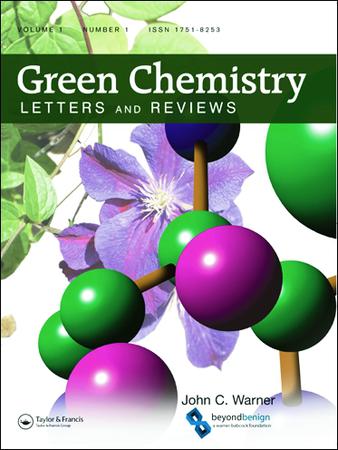利用Plackett-Burman优化绿色合成银纳米粒子和原位聚合聚吡咯开发导电纺织织物
IF 5.1
3区 化学
Q1 CHEMISTRY, MULTIDISCIPLINARY
引用次数: 6
摘要
本文章由计算机程序翻译,如有差异,请以英文原文为准。
Development of conductive textile fabric using Plackett–Burman optimized green synthesized silver nanoparticles and in situ polymerized polypyrrole
ABSTRACT Electronic textiles (e-textiles) are undergoing rapid technological advancements to attain e-textiles that look and feel like conventional textile fabrics. Research seeks to develop highly functionalized textile-based sensors, actuators, and energy storage devices that integrate seamlessly with current textile technologies. Presently, developments are limited by either low electrical performance, or high cost and complex construction. Additionally, negotiating the balance between high performing e-textiles and environmentally benign production is a challenge. In this report, green synthesized silver nanoparticles (AgNPs) are composited with the conjugated polymer, polypyrrole (Ppy), to create a low-cost conductive textile fabric. A Plackett–Burman design of experiment was used to optimize lime peel extract (LPE) mediated reduction for the synthesis of AgNPs. The results of this optimization process revealed silver nitrate concentration to be a significant factor in both size and UV-vis absorption maxima of the LPE-synthesized AgNPs, and reaction temperature also affecting UV-vis absorption maxima. The resultant optimized AgNPs were consistent in size (40–80 nm) and dispersity (PDI = 0.250). The LPE-synthesized AgNPs are used to form a AgNP-Ppy nanocomposite with a linen textile to produce an e-textile with low electrical resistance (37 Ω). GRAPHICAL ABSTRACT
求助全文
通过发布文献求助,成功后即可免费获取论文全文。
去求助
来源期刊

Green Chemistry Letters and Reviews
CHEMISTRY, MULTIDISCIPLINARY-GREEN & SUSTAINABLE SCIENCE & TECHNOLOGY
CiteScore
9.10
自引率
3.00%
发文量
48
期刊介绍:
Green Chemistry Letters and Reviews is an Open Access, peer-reviewed journal focused on rapid publication of innovative new syntheses and procedures that reduce or eliminate the use and generation of hazardous materials. Reviews of state-of-the-art green chemistry technologies are also included within the journal''s scope.
Green Chemistry Letters and Reviews is divided into three overlapping topic areas: research, education, and industrial implementation. The journal publishes both letters, which concisely communicate the most time-sensitive results, and reviews, which aid researchers in understanding the state of science on important green chemistry topics. Submissions are encouraged which apply the 12 principles of green chemistry to:
-Green Chemistry Education-
Synthetic Reaction Pathways-
Research and Process Analytical Techniques-
Separation and Purification Technologies-
Renewable Feedstocks-
Degradable Products
 求助内容:
求助内容: 应助结果提醒方式:
应助结果提醒方式:


